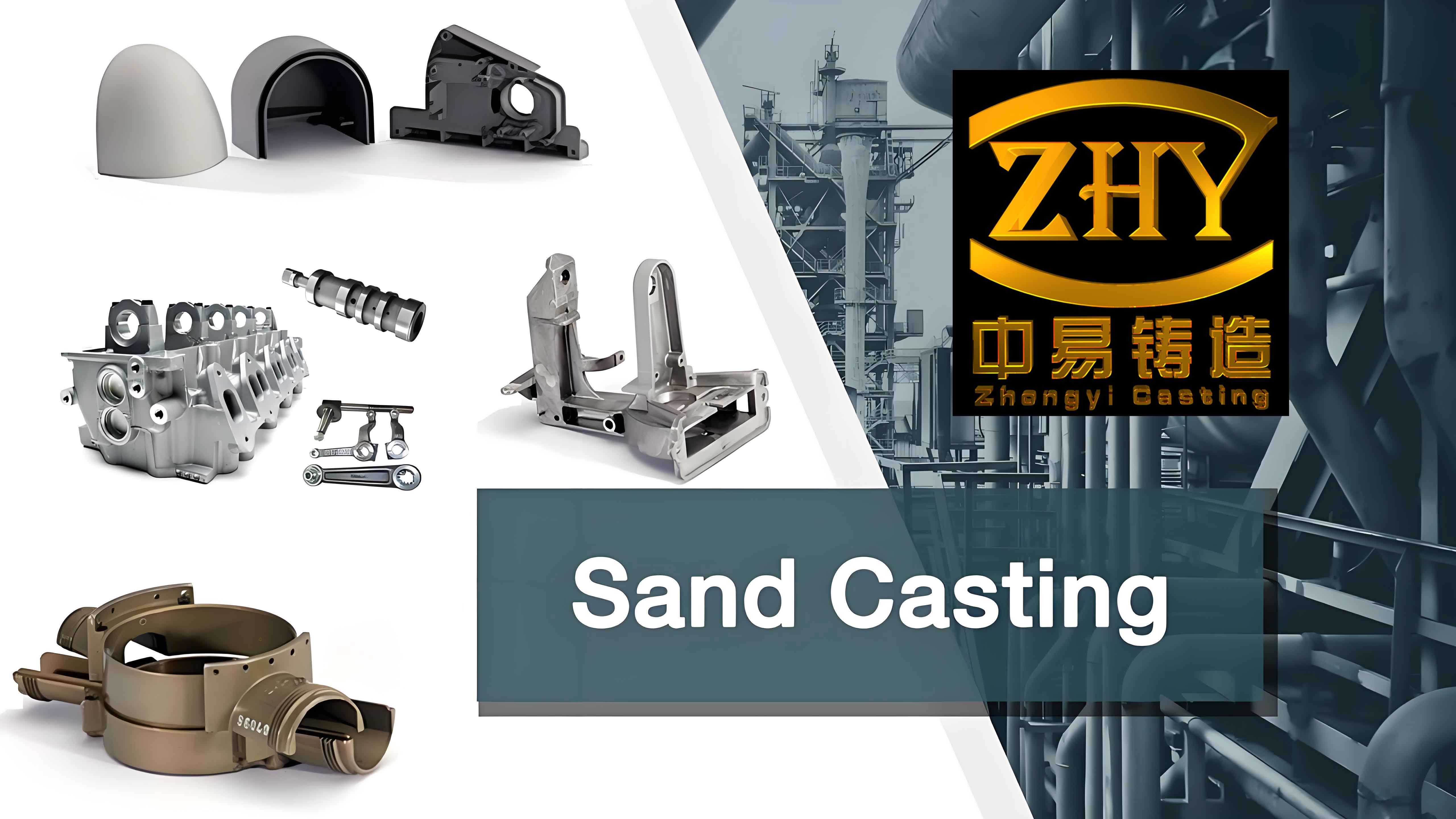Sand casting is an age-old manufacturing process that continues to play a vital role in modern industrial applications. The quality and performance of sand casting parts depend significantly on the design techniques employed. This article explores the advanced design techniques for sand casting parts, aiming to enhance their functionality, quality, and production efficiency.

Introduction to Sand Casting and Its Significance
Sand casting is a versatile manufacturing method that allows for the production of complex shapes and large-sized components. It finds extensive use in various industries such as automotive, aerospace, and machinery. The success of sand casting lies in the ability to create parts that meet the specific requirements of the application while ensuring optimal mechanical properties and dimensional accuracy.
Challenges in Sand Casting Part Design
Before delving into the advanced design techniques, it is essential to understand the challenges faced in sand casting part design. Some of the common challenges include:
- Shrinkage and Solidification Issues
During the cooling and solidification process, the molten metal undergoes shrinkage, which can lead to defects such as porosity, cracks, and distortion if not accounted for in the design. - Mold Filling Challenges
Ensuring proper mold filling to avoid cold shuts, misruns, and entrapment of gases requires careful consideration of the gating and risering systems. - Core Design Complexity
In cases where internal cavities or complex geometries are required, core design becomes crucial. Improper core design can result in core shift, core breakage, and poor casting quality. - Dimensional Accuracy and Tolerances
Maintaining tight dimensional accuracy and tolerances is often challenging due to the inherent variations in the sand casting process.
Advanced Design Considerations for Sand Casting Parts
- Optimization of Part Geometry
- Minimizing sharp corners and abrupt changes in section thickness to reduce stress concentrations.
- Incorporating fillets and radii to improve the flow of molten metal and reduce the risk of defects.
- Shrinkage Compensation
- Utilizing computer-aided design (CAD) software to simulate the shrinkage behavior of the metal and incorporate appropriate compensation in the part dimensions.
- Designing risers and feeders to supply additional molten metal during solidification and compensate for shrinkage.
- Gating and Riser Systems Design
- Selecting the appropriate gating system based on the part geometry and metal type to ensure smooth and controlled mold filling.
- Optimizing the riser size, shape, and location to provide effective feeding and prevent shrinkage defects.
- Core Design and Support
- Designing cores with proper draft angles and core prints for easy extraction from the mold.
- Providing adequate support and reinforcement to prevent core movement during the casting process.
Simulation Tools for Sand Casting Design
The use of simulation software has revolutionized sand casting part design. These tools allow designers to predict and analyze various aspects of the casting process, enabling them to make informed design decisions. Some of the commonly used simulation tools and their features include:
| Simulation Tool | Features |
|---|---|
| MAGMASOFT | Accurate prediction of mold filling, solidification, and shrinkage. |
| ProCAST | Capable of simulating complex geometries and multiple alloy systems. |
| AnyCasting | Allows for optimization of gating and risering systems. |
Design for Assembly and Functionality
When designing sand casting parts, it is essential to consider their assembly and functionality within the final product. This includes:
- Interface Design
- Ensuring proper mating surfaces and clearances for assembly with other components.
- Incorporating features such as chamfers and locating pins for accurate alignment.
- Functional Requirements
- Designing the part to withstand the expected loads and operating conditions.
- Considering factors such as fatigue resistance, wear resistance, and corrosion resistance based on the application.
Lightweight Design in Sand Casting
With the increasing demand for lightweight components, advanced design techniques can be employed in sand casting to achieve weight reduction without compromising strength and performance. This can be achieved through:
- Optimization of Material Distribution
- Using topology optimization algorithms to identify areas where material can be removed without sacrificing structural integrity.
- Hollow Structures and Ribbing
- Incorporating hollow sections and ribbing patterns to increase stiffness while reducing weight.
Design for Recyclability and Sustainability
In today’s environmentally conscious world, designing sand casting parts with recyclability and sustainability in mind is becoming increasingly important. This involves:
- Selecting Recyclable Materials
- Choosing alloys that are easily recyclable and have a lower environmental impact.
- Minimizing Waste Generation
- Optimizing the design to reduce the amount of scrap and excess material during the casting process.
Examples of Advanced Sand Casting Part Designs
To illustrate the application of advanced design techniques, let’s consider a few case studies:
Case Study 1: Automotive Engine Cylinder Head
The design of the cylinder head was optimized to improve the cooling efficiency and reduce weight. Advanced simulation tools were used to predict the flow of coolant and ensure uniform temperature distribution. The gating and risering systems were carefully designed to minimize defects and achieve tight dimensional tolerances.
Case Study 2: Aerospace Component
In an aerospace application, a complex structural component was designed using lightweight design principles. Hollow sections and optimized ribbing were incorporated to meet the stringent strength and weight requirements. The part was successfully produced with high-quality and excellent performance.
Conclusion
The advanced design techniques for sand casting parts offer significant opportunities to enhance the quality, performance, and production efficiency of cast components. By addressing the challenges, leveraging simulation tools, considering assembly and functionality, and focusing on sustainability, designers can create sand casting parts that meet the evolving demands of modern industries. Continual research and innovation in this field will further drive the advancement of sand casting as a reliable and competitive manufacturing process.
It is important to note that successful implementation of advanced design techniques requires close collaboration between designers, engineers, and foundry experts to ensure the feasibility and manufacturability of the designs. With the right approach and expertise, sand casting can continue to be a valuable manufacturing option for a wide range of high-quality parts.
